في عالم البناء والحفر، أصبح الطلب على المعدات الفعالة والموثوقة والمدمجة أعلى من أي وقت مضى. لقد ارتفعت الحفارات الصغيرة إلى مكانة بارزة، حيث توفر مزيجًا مثاليًا من القوة والتنوع والتنقل. في هذه المقالة، سوف نستكشف العالم المثير للحفارات الصغيرة الصينية للبيع. سنتعمق في المواصفات والمزايا والأسباب التي جعلتها خيارًا شائعًا في صناعة البناء والتشييد.
جدول المحتويات
- مقدمة
- The Rise of Mini Excavators
- Why Choose a Mini Excavator?
- Key Features of China Mini Excavators
- Versatility in Applications
- Compact Size, Big Power
- كفاءة الوقود
- Ease of Operation
- Maintenance and Durability
- الفعالية من حيث التكلفة
- Environmental Friendliness
- Popular Brands in China
- Factors to Consider When Buying
- Where to Find Mini Excavators for Sale
- استنتاج
- الأسئلة الشائعة
مقدمة
China mini excavators have taken the global construction industry by storm. These compact powerhouses have redefined the way we approach various construction and excavation tasks. They are known for their robust performance, cost-effectiveness, and eco-friendly features.
صعود حفارات صغيرة
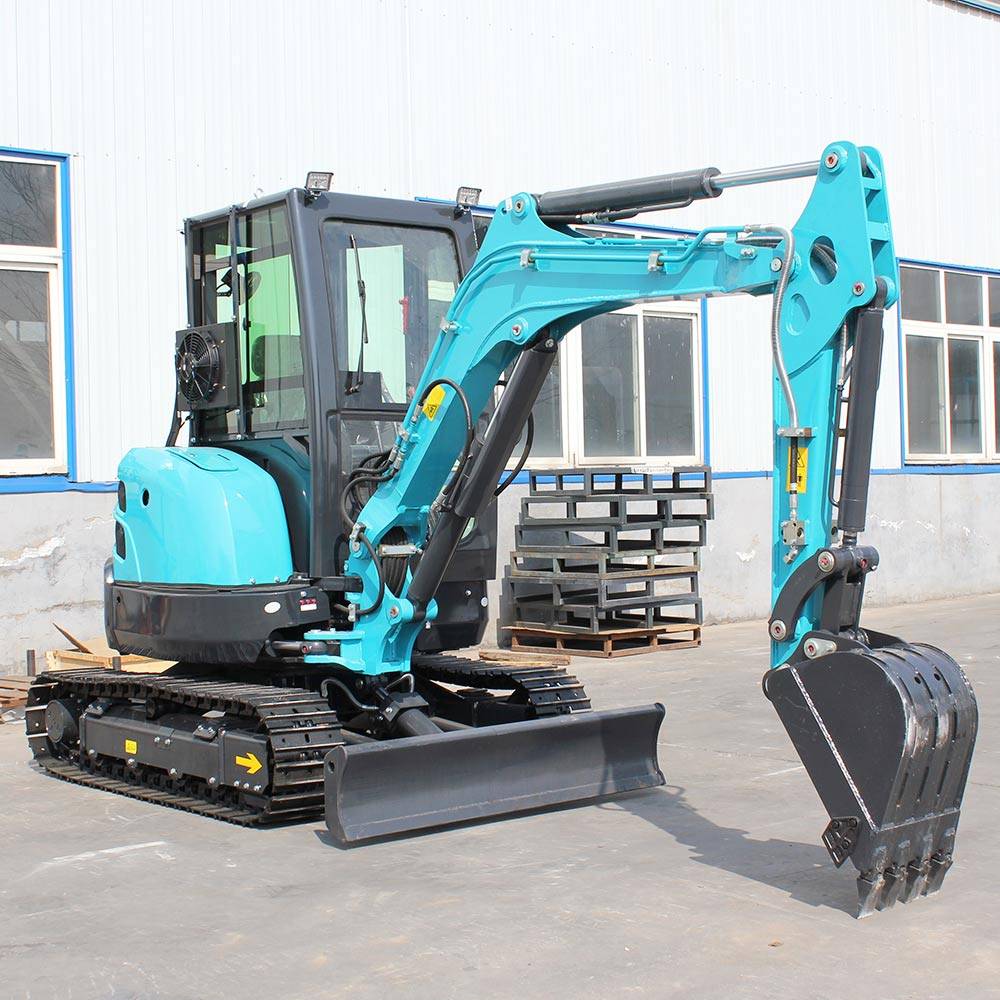
The Surge in Popularity of Mini Excavators
In recent years, we’ve witnessed an undeniable surge in the popularity of mini excavators within the construction and excavation industry. These compact but powerful machines have revolutionized the way we approach various projects, leading to a host of compelling reasons behind their meteoric rise.
Compact Marvels Redefining Construction
Mini excavators, often referred to as compact marvels, have redefined the landscape of construction and excavation. Their compact design, though unassuming in appearance, conceals an astonishing level of power and versatility. It’s this unique combination that has propelled them into the spotlight of the industry.
Perfect for Navigating Tight Spaces
One of the primary reasons behind the growing preference for mini excavators is their ability to nimbly navigate tight and confined job sites. Traditional heavy equipment often finds itself constrained in such spaces, but mini excavators effortlessly maneuver through them, making previously inaccessible areas a breeze to work on.
Versatile Companions for a Range of Projects
Versatility is the hallmark of mini excavators. They excel at a diverse range of tasks, from digging trenches for utility lines to clearing land for construction projects. They are equally at home in residential landscaping endeavors as they are in larger commercial ventures. This adaptability has made them indispensable in a wide array of applications.
The Efficiency and Productivity Nexus
What sets mini excavators apart is their ability to offer high productivity without compromising on efficiency. Despite their compact size, these machines boast impressive digging depths and reaches, often rivalling their larger counterparts. This translates into projects getting completed more quickly and with a remarkable level of precision.
Eco-Friendly Operation
Another compelling reason behind the growing appeal of mini excavators is their eco-friendly operation. These machines are designed with the environment in mind, boasting reduced emissions and lower fuel consumption. In an era where sustainability is paramount, mini excavators are aligned with the principles of a greener and more responsible construction industry.
Why Choose a حفارة صغيرة?
The Surge in Popularity of Mini Excavators
In recent years, we’ve witnessed an undeniable surge in the popularity of mini excavators within the construction and excavation industry. These compact but powerful machines have revolutionized the way we approach various projects, leading to a host of compelling reasons behind their meteoric rise.
Compact Marvels Redefining Construction
Mini excavators, often referred to as compact marvels, have redefined the landscape of construction and excavation. Their compact design, though unassuming in appearance, conceals an astonishing level of power and versatility. It’s this unique combination that has propelled them into the spotlight of the industry.
Perfect for Navigating Tight Spaces
One of the primary reasons behind the growing preference for mini excavators is their ability to nimbly navigate tight and confined job sites. Traditional heavy equipment often finds itself constrained in such spaces, but mini excavators effortlessly maneuver through them, making previously inaccessible areas a breeze to work on.
Versatile Companions for a Range of Projects
Versatility is the hallmark of mini excavators. They excel at a diverse range of tasks, from digging trenches for utility lines to clearing land for construction projects. They are equally at home in residential landscaping endeavors as they are in larger commercial ventures. This adaptability has made them indispensable in a wide array of applications.
The Efficiency and Productivity Nexus
What sets mini excavators apart is their ability to offer high productivity without compromising on efficiency. Despite their compact size, these machines boast impressive digging depths and reaches, often rivalling their larger counterparts. This translates into projects getting completed more quickly and with a remarkable level of precision.
Eco-Friendly Operation
Another compelling reason behind the growing appeal of mini excavators is their eco-friendly operation. These machines are designed with the environment in mind, boasting reduced emissions and lower fuel consumption. In an era where sustainability is paramount, mini excavators are aligned with the principles of a greener and more responsible construction industry.
Key Features of China Mini Excavators
The Surge in Popularity of Mini Excavators
In recent years, we’ve witnessed an undeniable surge in the popularity of mini excavators within the construction and excavation industry. These compact but powerful machines have revolutionized the way we approach various projects, leading to a host of compelling reasons behind their meteoric rise.
Compact Marvels Redefining Construction
Mini excavators, often referred to as compact marvels, have redefined the landscape of construction and excavation. Their compact design, though unassuming in appearance, conceals an astonishing level of power and versatility. It’s this unique combination that has propelled them into the spotlight of the industry.
Perfect for Navigating Tight Spaces
One of the primary reasons behind the growing preference for mini excavators is their ability to nimbly navigate tight and confined job sites. Traditional heavy equipment often finds itself constrained in such spaces, but mini excavators effortlessly maneuver through them, making previously inaccessible areas a breeze to work on.
Versatile Companions for a Range of Projects
Versatility is the hallmark of mini excavators. They excel at a diverse range of tasks, from digging trenches for utility lines to clearing land for construction projects. They are equally at home in residential landscaping endeavors as they are in larger commercial ventures. This adaptability has made them indispensable in a wide array of applications.
The Efficiency and Productivity Nexus
What sets mini excavators apart is their ability to offer high productivity without compromising on efficiency. Despite their compact size, these machines boast impressive digging depths and reaches, often rivalling their larger counterparts. This translates into projects getting completed more quickly and with a remarkable level of precision.
Eco-Friendly Operation
Another compelling reason behind the growing appeal of mini excavators is their eco-friendly operation. These machines are designed with the environment in mind, boasting reduced emissions and lower fuel consumption. In an era where sustainability is paramount, mini excavators are aligned with the principles of a greener and more responsible construction industry.
Versatility in Applications
In recent years, the construction industry has witnessed a significant surge in the popularity and usage of mini excavators. These compact yet powerful machines have revolutionized the way construction projects are undertaken. Their smaller size, improved maneuverability, and versatility have made them indispensable for a wide array of construction tasks, ranging from landscaping and trenching to small-scale demolition and excavation.
This surge in the adoption of mini excavators can be attributed to several factors. Firstly, their ability to navigate through tight spaces and operate in confined areas has made them a preferred choice for urban construction projects where space is limited. Additionally, advancements in technology have led to the development of mini excavators that boast impressive digging capabilities, rivaling those of their larger counterparts. This has enabled contractors to accomplish tasks efficiently while minimizing the impact on the surrounding environment.
Moreover, the cost-effectiveness of mini excavators has contributed to their widespread use. Their relatively lower operating costs, coupled with reduced fuel consumption, make them an economically viable option for small to medium-scale construction projects. Furthermore, their ease of transportation and setup has added to their appeal, allowing construction companies to optimize resources and streamline operations, thereby improving overall project efficiency.
As the demand for more compact and agile construction equipment continues to rise, it is expected that the mini excavator market will experience continued growth and innovation. With ongoing advancements in technology and an increasing focus on sustainability, mini excavators are set to play a pivotal role in shaping the future of the construction industry, catering to the evolving needs of modern construction projects.
Compact Size, Big Power
In the world of machinery, a remarkable trend has emerged, epitomized by the phrase “Compact Size, Big Power.” This trend represents a paradigm shift in the design and functionality of various industrial equipment, where smaller, more compact machines are now delivering exceptional levels of power and performance.
The concept of “Compact Size, Big Power” is gaining prominence across a wide spectrum of industries, from automotive engineering to electronics and beyond. This phenomenon is made possible through advances in engineering, materials, and technology. Manufacturers are continually pushing the boundaries of what’s achievable, creating compact yet robust machines that defy the traditional trade-off between size and performance.
One of the driving forces behind this trend is the increasing demand for efficiency and versatility. Compact, powerful machines offer numerous advantages in terms of maneuverability and adaptability to diverse work environments. Whether it’s compact construction equipment, handheld electronics, or small vehicles, the emphasis is on delivering the maximum possible functionality within a minimal footprint.
Moreover, the rise of compact machines with substantial power has a profound impact on sustainability. Reduced size often corresponds to lower resource consumption and emissions, aligning with the growing emphasis on environmentally responsible practices. This trend is particularly notable in the automotive industry, where compact electric vehicles are gaining popularity due to their impressive power output and minimal environmental footprint.
كفاءة الوقود
Fuel efficiency has become an imperative and defining aspect of modern transportation and machinery. It refers to the capability of a vehicle, engine, or system to maximize the utilization of fuel, effectively converting it into energy while minimizing waste and emissions. The pursuit of fuel efficiency is driven by several factors, including economic, environmental, and technological considerations.
In the realm of automobiles, fuel efficiency is a crucial determinant for both manufacturers and consumers. As the price of fuel fluctuates and environmental concerns continue to mount, the demand for vehicles that can travel longer distances on a gallon of fuel or a kilowatt-hour of electricity has skyrocketed. Manufacturers are responding by incorporating advanced technologies such as hybrid powertrains, electric propulsion, and lightweight materials to improve fuel efficiency, reduce greenhouse gas emissions, and ultimately lower the operating costs for consumers.
However, the quest for fuel efficiency extends beyond the automotive industry. It is a pervasive theme in various sectors, including aviation, where airlines are investing in more fuel-efficient aircraft to reduce their carbon footprint and operational costs. The maritime industry is also embracing fuel efficiency through innovations in ship design and propulsion systems, as they navigate the challenges of reducing emissions in compliance with international regulations.
In the construction and heavy machinery sectors, fuel efficiency is crucial for reducing the environmental impact of large-scale projects. Advancements in engine technology, better hydraulics, and optimized operational practices are enabling construction companies to achieve more work with less fuel, thereby saving on operating costs and decreasing their environmental footprint.
The pursuit of fuel efficiency is not solely about conserving resources and minimizing the carbon footprint. It is also intertwined with broader economic considerations, as reducing fuel consumption translates into cost savings for both businesses and individual consumers. In an era marked by growing environmental awareness and fluctuating energy prices, the importance of fuel efficiency is set to remain a central focus of innovation and development across multiple industries, driving the creation of more sustainable and economically viable solutions.
Ease of Operation
The concept of “Ease of Operation” has become a paramount consideration in the design and development of various technologies, equipment, and systems across a multitude of industries. It encompasses the idea that machines, devices, and processes should be user-friendly, intuitive, and straightforward to operate, even for individuals with minimal training or experience.
In today’s fast-paced and technologically driven world, ease of operation is a defining attribute that significantly influences the adoption and success of products and services. Manufacturers and developers are increasingly focused on ensuring that their creations are accessible and user-centric, promoting efficiency, safety, and productivity.
The importance of ease of operation is readily apparent in the realm of consumer electronics. Smartphones, tablets, and other digital devices are designed with user interfaces that are visually intuitive and responsive, making them accessible to a wide range of users. This emphasis on user-friendliness has made technology more inclusive and has enabled individuals of all ages and backgrounds to engage with and benefit from the digital world.
In the industrial sector, the concept of ease of operation has reshaped manufacturing processes. Modern machinery is equipped with user-friendly interfaces, reducing the learning curve for operators and facilitating faster adaptation to new equipment. As a result, companies can improve productivity and reduce the potential for errors, all while enhancing the safety of their workforce.
The ease of operation is particularly crucial in sectors like healthcare, where complex medical devices and diagnostic equipment must be operated by healthcare professionals under high-pressure situations. User-centric designs reduce the risk of errors and improve patient outcomes, ultimately saving lives.
Moreover, in the transportation industry, user-friendly interfaces in vehicles and aircraft have made it easier for pilots and drivers to navigate and control these sophisticated machines. This not only enhances safety but also reduces the training required for new operators.
In summary, “Ease of Operation” is a driving force behind technological advancements in an array of fields. It’s a core principle that prioritizes the end-user experience and strives to remove barriers to entry, enabling a broader demographic to engage with, benefit from, and contribute to a more efficient and innovative world. As technology continues to evolve, the pursuit of ease of operation remains a central focus, revolutionizing the way we interact with the tools and systems that shape our daily lives.
Maintenance and Durability
The principles of “Maintenance and Durability” hold a pivotal role in the design, manufacturing, and use of various products, structures, and systems across a spectrum of industries. This concept represents the idea that, in addition to functionality, the longevity and ease of maintenance of a product or structure are vital considerations, ensuring long-term reliability and value.
In today’s world, the emphasis on maintenance and durability is deeply intertwined with economic, environmental, and safety concerns. Manufacturers and designers recognize the importance of creating products and structures that not only perform well but also stand the test of time with minimal maintenance requirements.
The maintenance aspect of this concept relates to the ease of keeping a product or structure in optimal working condition. Whether it’s a car, a building, or industrial machinery, easy access to serviceable components and simplified maintenance procedures can significantly reduce downtime, repair costs, and the potential for operational disruptions. Products that are engineered with user-friendly maintenance in mind are more likely to be well-maintained, extending their service life and reducing the overall cost of ownership.
Durability, on the other hand, underscores the resilience of a product or structure over time, even when subjected to harsh conditions or heavy usage. Products that are built to last not only minimize waste and resource consumption but also offer a longer return on investment for consumers and businesses. Durability is especially crucial in industries like construction, where structures are expected to withstand decades of use, and in the automotive sector, where vehicles must endure various driving conditions.
The pursuit of maintenance and durability extends to the world of technology, where devices are expected to function reliably for years. Manufacturers of smartphones, laptops, and other electronic gadgets are continually working to design products that are both durable and easy to repair or upgrade, thereby reducing electronic waste and contributing to sustainability.
Additionally, in the energy and infrastructure sectors, the concepts of maintenance and durability play a vital role in ensuring the long-term performance and safety of power plants, bridges, and pipelines. Regular maintenance and robust materials are essential to minimize the risk of system failures that can have far-reaching consequences.
In conclusion, “Maintenance and Durability” represents a commitment to creating products and structures that are not only functional but also reliable and sustainable over time. This approach aligns with the growing emphasis on responsible resource management and the need for economic efficiency, making it a fundamental principle in various industries as they strive to create more reliable, sustainable, and cost-effective solutions.
الفعالية من حيث التكلفة
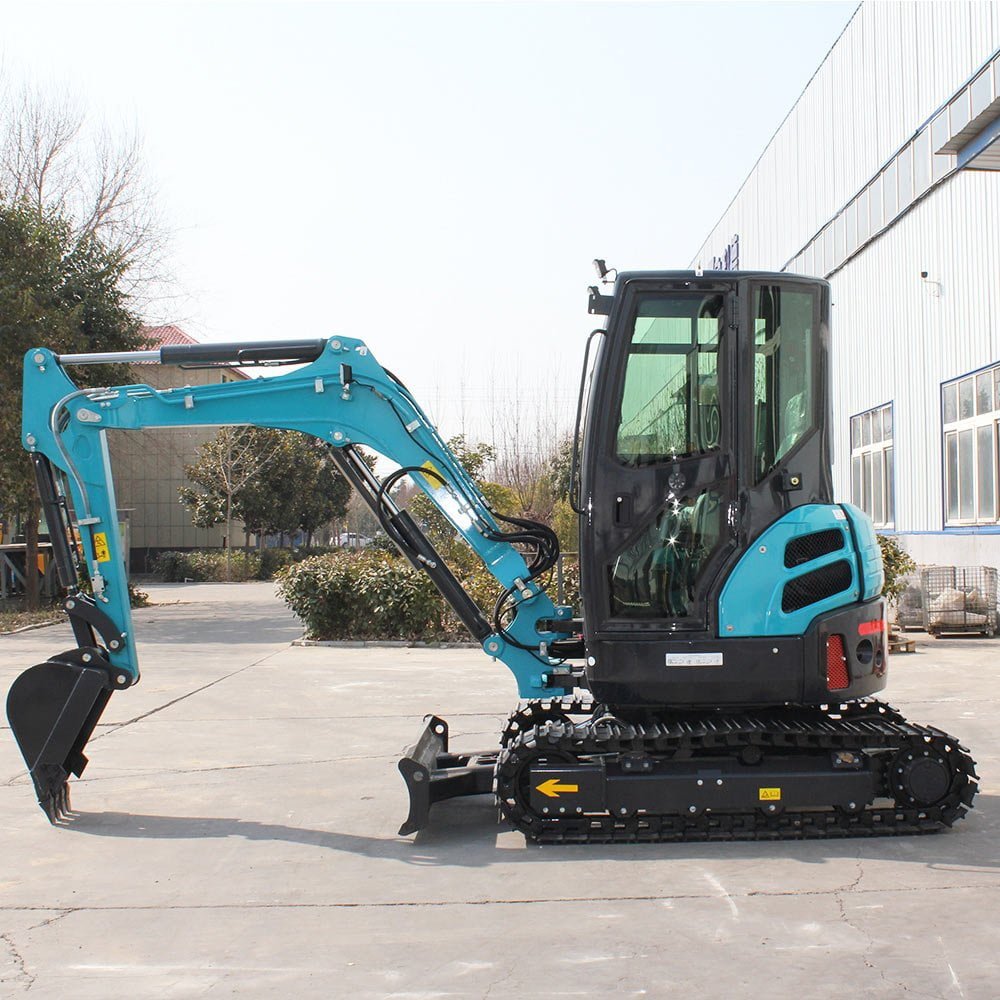
The principle of “Cost-Effectiveness” is a fundamental concept that permeates diverse industries, guiding decision-making, and strategy formulation. It underscores the need to maximize the value and efficiency of resources expended, emphasizing that the benefits derived from an investment or action should significantly outweigh the costs incurred.
In an era characterized by global competition, economic constraints, and environmental concerns, the pursuit of cost-effectiveness is essential for businesses, organizations, and governments alike. It encompasses various dimensions, including financial efficiency, sustainability, and innovation.
One of the primary dimensions of cost-effectiveness is financial efficiency. This aspect relates to the prudent allocation and management of financial resources to achieve the desired outcomes while minimizing waste. Businesses, for instance, continually seek ways to reduce operational costs, streamline processes, and optimize supply chains to improve their profitability and competitiveness. Governments and non-profit organizations also strive to maximize the impact of their expenditures, ensuring that taxpayer or donor funds are put to the best use.
Cost-effectiveness is intrinsically tied to sustainability. In today’s ecologically conscious world, the sustainability of practices and products is a key consideration. Businesses and governments recognize that environmentally responsible initiatives, such as energy-efficient technologies, waste reduction, and renewable energy sources, often lead to long-term cost savings. This dual focus on cost-effectiveness and sustainability not only reduces the environmental impact but also future-proofs operations against the challenges of climate change and resource scarcity.
Innovation is another facet of cost-effectiveness. Pioneering novel approaches, technologies, or strategies can lead to substantial cost savings and improved results. Businesses invest in research and development to create more cost-effective products and services, while governments explore innovative policies to address societal challenges efficiently.
The concept of cost-effectiveness is applicable across industries, from healthcare, where it plays a crucial role in determining the most efficient medical treatments, to construction, where it drives the adoption of advanced building techniques and materials. It is also at the heart of transportation, where optimizing fuel efficiency, reducing congestion, and enhancing public transit are central to cost-effective mobility solutions.
Environmental Friendliness
“Environmental Friendliness” is a core principle that underscores the commitment to safeguarding and preserving the environment in the face of growing ecological challenges. It reflects a conscientious approach that aims to minimize the negative impact of human activities on the natural world while promoting sustainable practices that benefit both the planet and future generations.
The concept of environmental friendliness encompasses various dimensions, including conservation, pollution reduction, and resource sustainability. It has gained immense significance in a world grappling with climate change, biodiversity loss, and the depletion of natural resources.
Conservation lies at the heart of environmental friendliness. It involves the protection and preservation of vital ecosystems, such as forests, wetlands, and oceans, as well as the species that inhabit them. This conservation not only safeguards biodiversity but also ensures the long-term stability and resilience of our planet’s ecosystems. Strategies encompass protected areas, reforestation efforts, and initiatives to combat habitat destruction.
Pollution reduction is another essential aspect. Environmental friendliness encourages the reduction of pollution in all its forms, from air and water pollution to the disposal of hazardous waste. Governments, industries, and individuals are investing in cleaner technologies, sustainable waste management practices, and emissions control measures to mitigate the detrimental effects of pollution on the environment and human health.
Resource sustainability plays a critical role in environmental friendliness. This principle acknowledges that the Earth’s resources are finite and must be managed responsibly. Sustainable practices, such as renewable energy adoption, efficient water usage, and responsible mining and agriculture, are key components of this approach. These practices aim to ensure that resources are used in a way that meets the needs of the present without compromising the ability of future generations to meet their own needs.
The pursuit of environmental friendliness transcends industries, affecting areas ranging from energy and agriculture to transportation and construction. In the automotive sector, for example, the shift towards electric vehicles and improved fuel efficiency is driven by the desire to reduce greenhouse gas emissions and minimize the environmental impact of transportation. In agriculture, sustainable farming methods are being employed to protect soil health, conserve water, and reduce the use of harmful pesticides and fertilizers.
In conclusion, “Environmental Friendliness” is a holistic approach that has evolved into a global imperative. It underscores the importance of responsible stewardship of the planet, emphasizing the need to harmonize human activities with the Earth’s natural systems. In an era of climate change and environmental degradation, the pursuit of environmental friendliness is vital in ensuring the well-being of our planet and the prosperity of future generations.
China Mini Excavator for Sale: Popular Brands in China
Several reputable brands in China produce top-quality mini excavators, such as Qilu, SANY, and LiuGong. Their products are known for their reliability and performance.
Factors to Consider When Buying
When making purchasing decisions, there are numerous critical aspects and considerations that individuals, businesses, and organizations must weigh carefully. The choice to buy a product or service is seldom straightforward, and it often necessitates a comprehensive assessment of various factors to ensure that the decision aligns with one’s needs and objectives.
One of the foremost factors to contemplate is the “Need Analysis.” Understanding one’s specific requirements is pivotal when making a purchase. By conducting a thorough need analysis, buyers can identify precisely what problem the product or service should solve, whether it’s a basic necessity or a discretionary item. This insight is invaluable as it forms the foundation for the entire decision-making process, ensuring that the purchase serves a purpose.
Cost is another primary consideration in any buying decision. This extends beyond the initial price and includes factors like ongoing maintenance, operational expenses, and potential hidden costs. Evaluating the total cost of ownership is essential, particularly in business and organizational settings, where budgets must be managed meticulously to maintain financial sustainability.
Quality and Reliability are paramount factors that significantly impact satisfaction and longevity. Ensuring that a product or service meets established quality standards and has a proven track record of reliability can help mitigate the risk of defects, breakdowns, or disappointments. Consumer reviews, industry certifications, and product testing are often relied upon to gauge these attributes.
The aspect of “Compatibility” is particularly relevant in the context of technology and systems. Products and services should seamlessly integrate with existing infrastructure and processes. In the world of software and hardware, for instance, compatibility with other software or devices can be a deciding factor in a purchase, ensuring that the new acquisition works harmoniously within the existing ecosystem.
The “Vendor or Supplier Reputation” is another critical factor that buyers should consider. The reliability and credibility of the entity providing the product or service are essential. Vendor reputation can speak to customer service, warranty support, and adherence to ethical and environmental standards. Trustworthy vendors often foster long-term relationships with their customers.
Environmental and ethical considerations have gained prominence in recent years, with many buyers scrutinizing the “Sustainability” and ethical practices of companies. This factor involves assessing a product or service’s environmental impact, including its carbon footprint, material sourcing, and disposal, as well as the company’s commitment to fair labor practices and social responsibility.
Furthermore, “Warranty and After-Sales Support” are integral aspects of a purchase. A comprehensive warranty and accessible after-sales support can provide peace of mind, knowing that any issues or service needs will be promptly addressed, potentially extending the life and value of the product.
In sum, a host of diverse factors shape the purchasing decision-making process, and they may vary based on the nature of the product or service and the buyer’s specific needs. Considering these factors comprehensively can help individuals, businesses, and organizations make well-informed and prudent buying decisions, ensuring that the acquired items or services not only meet immediate requirements but also contribute to long-term satisfaction and success.
Where to Find Mini Excavators for Sale
When in search of mini excavators for sale, there are various avenues and resources available to potential buyers. The process of finding the right mini excavator can be a multifaceted one, involving a blend of traditional and digital means, all geared towards connecting buyers with sellers and ensuring a well-informed purchase decision.
- Construction Equipment Dealerships: Traditional construction equipment dealerships are a go-to option for purchasing mini excavators. These establishments often have a wide range of models and brands, both new and used. They provide the advantage of on-site inspections and expert guidance. Buyers can visit the dealership, view the machines in person, and discuss their specific needs with knowledgeable sales representatives.
- Online Marketplaces: The internet has revolutionized the way people shop for mini excavators. Online marketplaces such as eBay, MachineryTrader, and Equipment Trader host a vast array of listings from various sellers, including dealers, individuals, and auction houses. These platforms offer the convenience of browsing through numerous options, comparing prices, and easily contacting sellers.
- Auctions: Mini excavators are often available at construction equipment auctions. These auctions may be conducted in person or online. Attending an auction can be a good way to potentially secure a competitive deal, but it requires careful research and a readiness to bid effectively. Online auction sites like Ritchie Bros. and IronPlanet provide a digital platform for participating in equipment auctions.
- Classified Ads: Local and online classified advertisements, like Craigslist or Gumtree, can be a source for both new and used mini excavators. These listings may be posted by individuals or small businesses looking to sell their equipment. Buyers should exercise caution, do thorough due diligence, and, if possible, physically inspect the equipment before making a purchase.
- Manufacturer Websites: Many mini excavator manufacturers maintain official websites where potential buyers can explore their product offerings, specifications, and contact information for authorized dealerships. This route can be valuable for those seeking brand-new equipment or specific models.
- Rental Companies: Rental companies often sell their used equipment after it has been retired from rental service. These machines are typically well-maintained, and buyers may find that they come with maintenance records. Contacting local rental companies can lead to the discovery of mini excavators available for sale.
- Trade Shows and Industry Events: Construction and equipment trade shows are ideal places to see a wide array of mini excavators and speak directly with manufacturers and dealers. While these events often focus on showcasing new equipment, attendees might also find opportunities to purchase used or demo machines.
- Social Media and Forums: Online communities, social media groups, and forums dedicated to construction and heavy equipment are increasingly used by individuals and companies looking to buy and sell mini excavators. These platforms enable networking and discussions with fellow enthusiasts, contractors, and sellers.
استنتاج
China mini excavators for sale offer a compelling combination of power, versatility, and affordability. They have revolutionized the construction industry and continue to be a preferred choice for various projects.
الأسئلة الشائعة
Are mini excavators suitable for large-scale construction projects?
Mini excavators are typically used for smaller to medium-sized projects. However, some larger models can handle more extensive tasks.
How can I ensure the longevity of my mini excavator?
Regular maintenance, proper operation, and following the manufacturer’s guidelines can significantly extend the life of your mini excavator.
What are the environmental benefits of using mini حفارات?
Mini excavators have lower emissions and reduced fuel consumption, contributing to a greener and more sustainable construction industry.
Can mini excavators be used in landscaping projects?
Yes, mini excavators are ideal for landscaping tasks, such as digging holes, trenching, and moving materials.
What financing options are available for purchasing mini excavators?
Many dealers offer financing options, and you can explore leasing or loan programs to acquire a mini excavator for your business.

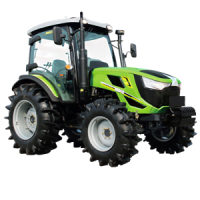
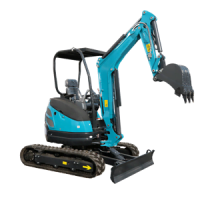
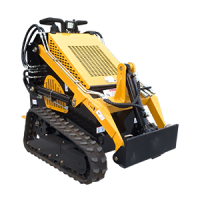
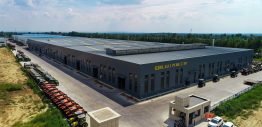
-1.png)